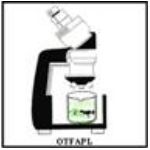AGLS 6502 Lecture 20.4 - The Javelina or Quenk: Housing
Peccaries in captive conditions have been housed under a variety of systems.
- Under experimental conditions a semi-extensive system was utilized by Lochmiller et al. (1987). This consisted of an outdoor enclosure 30m x 30m, and housed 16 adult peccaries, ranging in age from 3 years and above. A stocking density of 56 m2/head was used.
- Under intensive conditions, pairs of pregnant females have been housed in covered pens 3m x 2m, and stocking density of 3m2/head (Lochmiller et al., 1987;1985).
- At the Emperor Valley Zoo (Trinidad and Tobago), peccaries on display are housed in an enclosure 30m x 30m (Charles, 1997). Within this semi-natural environment, the mixed population has, over the years, ranged from 16 - 25 animals with a stocking density of 36 - 56 m2/head (Charles, 1997).
- At the Berlin Zoo, white lipped peccaries (n = 9.7) are housed in an outdoor enclosure of 500 m2, and stocking density of 51 m2/head (Fradrich, 1995).
In developing housing facilities, consideration has to made with respect to the behaviour of the animal. Particular interest is to be placed on the animal’s high level of socialization, and low tolerance for unfamiliar animals.back to top
Helpful Links, Photos, Videos and Multimedia
